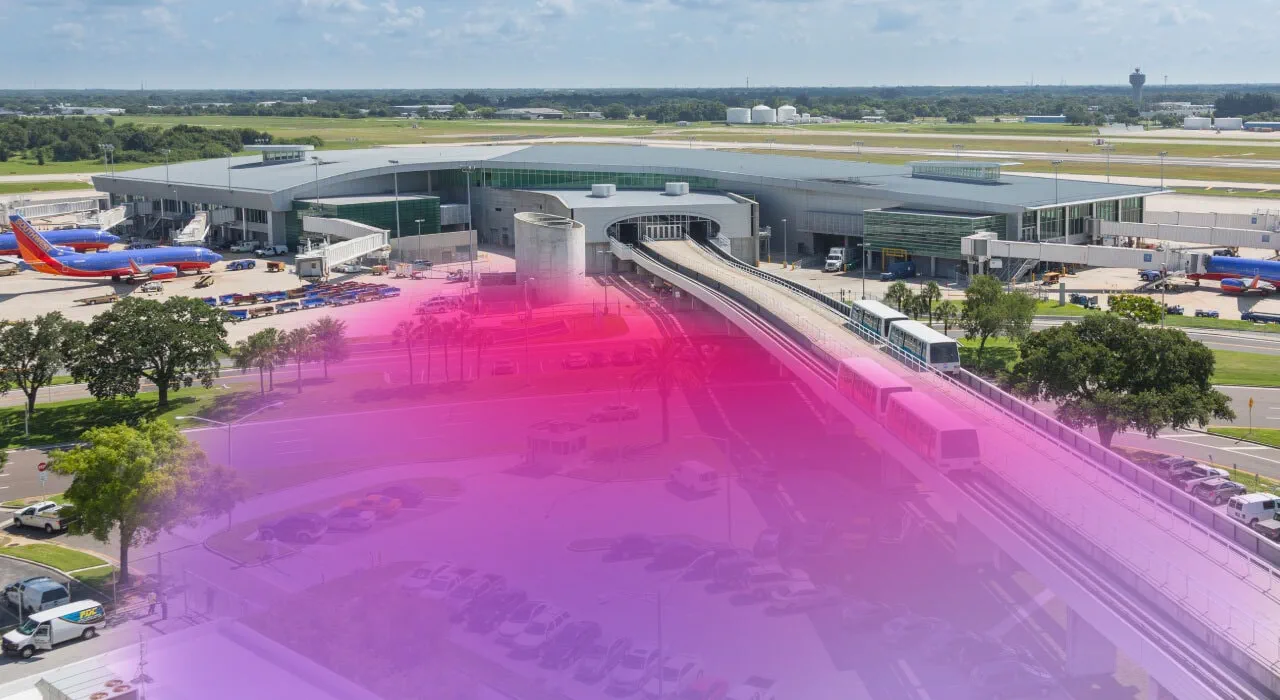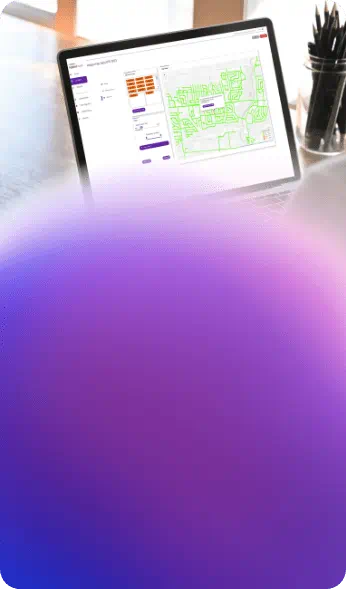Transportation today evolves rapidly due to pressuring demands by passengers and commercial users. The effective management of assets is crucial for ensuring operational efficiency, reducing downtime, and maximizing performance. Three key concepts that play a significant role in optimizing asset management practices in the transportation industry are Enterprise Asset Management (EAM), Computerized Maintenance Management Systems (CMMS), and Asset Performance Management (APM).
Whether you are a seasoned asset manager, responsible for the operations side of assets and infrastructure or a maintenance manager working in depots, sometimes the differences and similarities of those practices and the software used to execute them are too blurry to separate. Here we will attempt to provide a clear understanding of each term, the software commonly used, their relevance to operations and asset managers, and the benefits yielded when used the right way.
It's worth noting that EAM, CMMS, APM are all interrelated and can overlap in some aspects, so it is important to recognize the similarities and differences between them to get the full picture of the benefits they can bring to transportation organizations such as yours.
Enterprise Asset Management (EAM)
What is EAM? Enterprise Asset Management (EAM) refers to the comprehensive approach of managing an organization's physical assets throughout their entire lifecycle, from acquisition to disposal. It involves strategic planning, maintenance, repair, and replacement of assets, with the aim of optimizing their utilization, minimizing costs, and improving overall performance. Other types of enterprise asset management in the transportation industry include Rail Asset Management (RAM), which specifically focused on management and maintenance of railway assets, and Transportation Asset Management (TAM), which covers all types of transportation assets (roads, bridges, public transit, etc.).
What type of software is used? EAM software solutions, such as IBM Maximo or SAP EAM, are commonly employed in EAM processes. These best-in-class systems facilitate asset tracking, scheduling maintenance activities, managing work orders, and generating reports for performance analysis. This way, the transportation organizations get to use information like where certain assets are located, who is using them, how they are being utilized and details about the asset in a more efficient way and helps them make decisions on the spot to keep their networks moving.
Why should I care about EAM software as an operations manager? A large chunk of transportation organizations’ budget is spent on infrastructure, and equipment. Operations managers utilize EAM software to monitor asset utilization, plan maintenance schedules, and track the performance of assets to efficiently allocate resources, schedule preventive maintenance tasks, and ensure compliance with regulations. This way, they can make the most of their assets and their workforce and improve uptime whilst keeping costs down.
Why should I care about EAM software as an asset manager? Asset managers rely on EAM software to gain a holistic view of assets across the organization. They can make informed decisions regarding asset acquisition, disposal, and maintenance strategies. EAM systems enable them to optimize asset performance, reduce downtime, and extend asset lifespan. In a nutshell, an asset manager has their project manager hat on all the time and a good EAM software with its broad suite of capabilities gives them full transparency to ultimately increase revenue and ROI through efficiencies.
How does the transportation industry benefit from deploying EAM software: EAM systems offer several benefits for transportation organizations:
• You can streamline inventory management to ensure you have the necessary parts on hand when they are needed
• You can extend the life and usability of your assets with more informed and proactive maintenance strategies
• By deploying a mobile EAM solution, you can maximize remote capabilities and facilitate multi-site working
• Integrating your EAM software with your financial software you can align the organization’s efforts in simplifying and streamlining financial audits
• Centralizing asset data about your organization’s physical assets in one single system can save time, increase efficiency, and lower costs in the long term
• With enhanced asset tracking and traceability, you can not only meet complex safety, environmental, and health requirements, you modernize your whole maintenance operations, keeping the workforce productive, safe, and job satisfied
These benefits ultimately result in improved operational efficiency, enhanced regulatory compliance, cost savings, and extended asset lifespan.
EAM Application in rail: An EAM solution in the rail industry could track locomotives, wagons, and infrastructure assets. It would monitor maintenance schedules, manage spare parts inventory, and provide real-time data on asset condition for proactive maintenance.
EAM Application in aviation: In the aviation sector, EAM software can manage aircraft, engines, and other critical components. It would assist in tracking maintenance tasks, managing maintenance contracts, and optimizing the allocation of resources for maintenance operations.
EAM Application for bus fleets: EAM software for both bus and truck fleets would oversee the maintenance of the fleets, depots, and associated equipment. It aids in tracking vehicle history, managing warranties, and scheduling maintenance activities to minimize disruptions.
Computerized Maintenance Management Systems (CMMS)
What is a CMMS? Computerized Maintenance Management Systems (CMMS) are software applications designed to streamline and automate maintenance management processes. A CMMS can actually be considered as a component of a broader EAM system. CMMS enables efficient planning, scheduling, and tracking of maintenance activities, ensuring timely and effective asset maintenance.
What type of software is used? CMMS software is commonly utilized to implement CMMS functionalities. These systems provide modules for work order management, preventive maintenance scheduling, inventory control, and reporting. Be aware that these modules can already be found in the main EAM software systems; usually an EAM tends to be more in-depth than a typical CMMS and it solves a multitude of maintenance problems compared to the focused approach of a CMMS.
Why should I care about EAM software as an operations manager? Operations managers heavily rely on CMMS software to schedule and manage maintenance tasks, assign work orders, track work progress, and ensure compliance with safety regulations. CMMS facilitates effective resource allocation, minimizing equipment downtime, and improving operational efficiency – all of that without the need for spreadsheets or whiteboards.
Why should I care about EAM software as an asset manager? Asset managers utilize CMMS software to monitor asset performance, track maintenance history, and identify areas for improvement. CMMS enables them to make data-driven decisions regarding asset replacement or refurbishment, ensuring optimal asset utilization.
How does the transportation industry benefit from deploying CMMS software: CMMS systems offer numerous advantages, especially to small transit organizations that do not have the budget to deploy an EAM system:
• You can reduce workforce costs as staff efficiency is maximized
• You can also minimize delays in asset downtime because of replacement parts and inventory being available ahead of scheduled maintenance work orders
• You also get a more granular view of the history of your assets, giving you the ability to create a feedback loop on work orders based on analysis of similar assets and more accurate maintenance records
These benefits lead to overall increased asset reliability, reduced maintenance costs, and improved safety and performance.
CMMS application in rail: A CMMS solution in the rail industry would streamline maintenance processes for tracks, signals, and rolling stock. It would track work orders, schedule preventive maintenance, manage spare parts inventory, and generate reports on maintenance costs and equipment performance.
CMMS application in aviation: In aviation, CMMS software would support the maintenance of aircraft, avionics, and ground support equipment. It would help track maintenance tasks, manage inspection schedules, and provide real-time visibility into asset status and maintenance history.
CMMS application for bus fleets: A CMMS system for bus fleets would facilitate the management of vehicle maintenance, tracking repairs, managing spare parts inventory, and generating reports on maintenance costs and resource utilization.
Asset Performance Management (APM)
Asset Performance Management (APM) usually refers to how we can use advanced analytics and technologies to monitor, analyze, and optimize asset performance. APM focuses on maximizing the availability, reliability, and performance of critical assets. The difference between EAM and APM is that an EAM solution is a system-of-record, documenting and managing work-orders for each maintenance event across an asset's lifecycle, whereas an APM solution is a system-of-decisions, providing continuous insights to optimize asset performance and reliability.
What type of software is used? APM software solutions are commonly employed for implementing APM strategies. These systems leverage data analytics, machine learning, and predictive maintenance techniques and support organizations to maximize predictability of equipment or facilities to make them more reliable.
Why should I care about EAM software as an operations manager? Operations managers utilize APM software to gain insights into asset health, identify potential failures, and optimize maintenance strategies. APM enables proactive decision-making, reducing downtime, and improving operational efficiency.
Why should I care about EAM software as an asset manager? Asset managers leverage APM software to assess asset performance, identify risks, and prioritize maintenance activities. APM systems provide real-time analytics, enabling them to optimize asset reliability, reduce costs, and extend asset lifespan.
How does the transportation industry benefit from deploying APM software: APM systems offer benefits that can help transport organizations acquire high quality, reliable data with confidence. High quality data is characterized by:
• Completeness of data in relation to asset specification
• Compliance with definitions of parameters, types and formats of data required
• Accurate input, transfer, handling, and storage of data
• Sufficient population and adequate surveillance period of assets to extract data
• Relevance to the data users’ needs
By leveraging these reliable analytics, APM helps transportation companies achieve higher operational efficiency mid-term, lower maintenance expenses, and enhanced customer satisfaction. Still, if your needs are solving long-term specific problems, you might need a more in-depth software such as the Arcadis Gen EDA Asset, where you can integrate different disparate data sources, build asset models, analyze and optimize data in order to produce reporting outcomes for operational, tactical, and strategic decision making.
APM application in rail: APM software in the rail industry would use sensor data, historical records, and advanced analytics to predict equipment failures, optimize maintenance schedules, and improve asset reliability. It would facilitate condition-based maintenance for critical components like wheels, brakes, and signaling systems.
APM application in aviation: In aviation, APM software would analyze aircraft performance data, maintenance records, and operational parameters to predict maintenance needs, optimize maintenance schedules, and enhance aircraft reliability. It would focus on critical components such as engines, avionics, and landing gear.
APM application for bus fleets: APM software for bus fleets would monitor vehicle health, analyze sensor data, and historical records to predict maintenance requirements, optimize maintenance schedules, and improve fleet reliability. It would focus on critical systems such as engines, transmissions, and braking systems.
Contact us today to find out the right software fit for your organization and see how we solved other transportation organizations’ problems with our out-of-the-box asset management and analytics software solutions.
Did you find this information useful?
Did you find this information useful?
Thank you for your feedback!

 Back
Back



